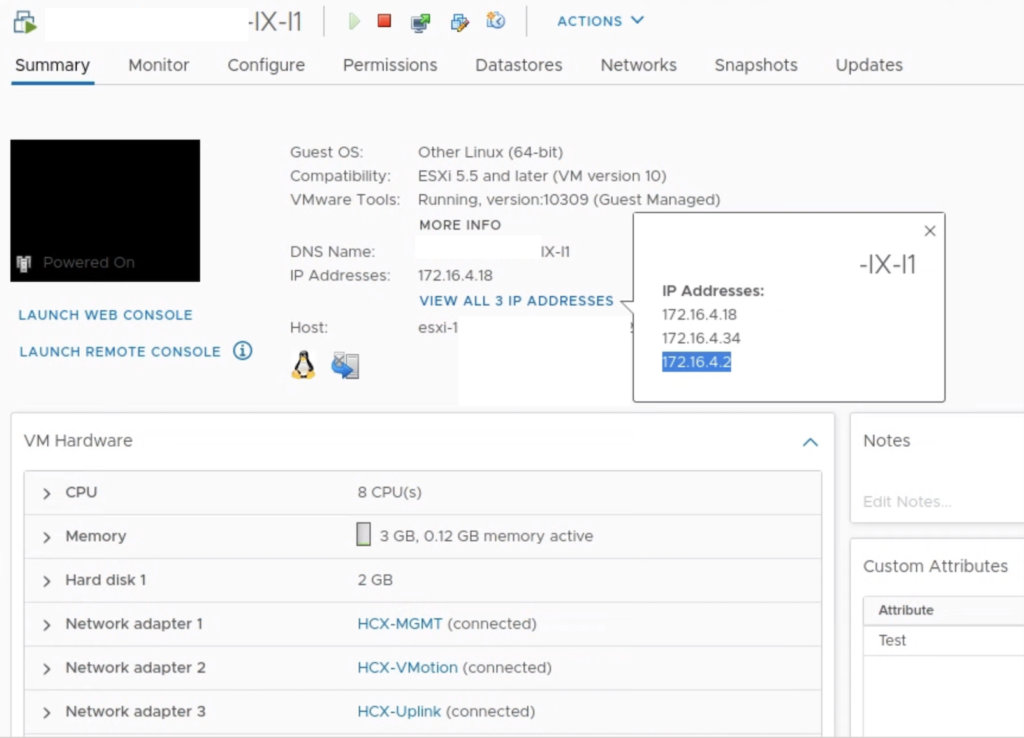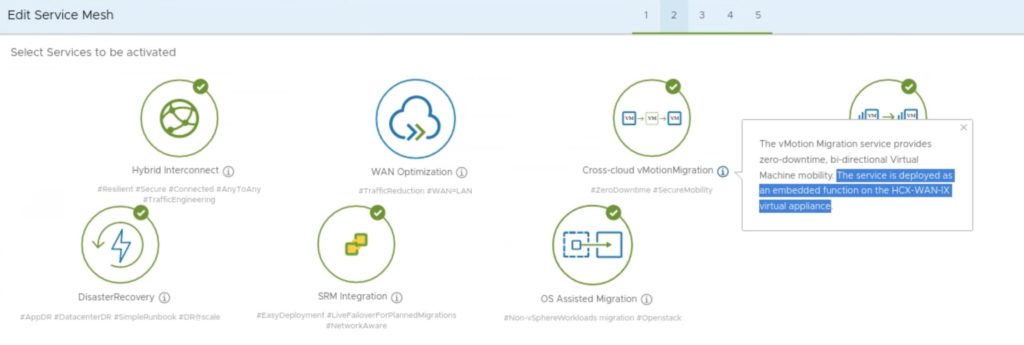I bet many administrators have been surprised by this new ESXi appearing on a hosts list in vCenter UI after a HCX service mesh had been created for the first time. And for every HCX service mesh we create, there is one ESXi “host” being deployed.
Of course it is not a “real” host, it looks a little bit like its a nested one and its name seems to always be its HCX Interconnect (IX) appliance’s management IP. I think of it as a IX appliance’s alter ego 😉

It does have its own “VMware Mobility Agent Basic” license for 2 CPUs.

But it not a typical nested ESXi, it’s a dedicated VMware Mobility Platform.

It has its own VMFS local datastore called ma-ds with a total “capacity” of 500 TB and 1 TB of RAM 😉 Fortunately, nothing is really taken from our physical resources.


In my case HCX service mesh Interconnect Appliance IX has 172.16.4.2 as management address, hence the host was named “172.16.4.2”.

IX appliance is a VM with many network interfaces, among the most important ones are HCX Management Interface, HCX vMotion Interface and HCX Uplink Interface. Uplink Interface is in fact the only one that is used to communicate with a target side, Management and vMotion Interfaces are used locally. The CIDR for those interfaces (and many other settings) are set during Network Profiles creation in HCX UI.

So what does this new dummy Host do?
Its job looks like a proxy for vMotion tasks between two paired HCX sides and allows for long distance cross vCenter vMotion. It is configured when the following service option is enabled: vMotion Migration service.
“The vMotion Migration service provides zero-downtime, bi-directional Virtual Machine mobility. The service is deployed as an embedded function on the HCX-WAN-IX virtual appliance.“

For HCX vMotion, we don’t need direct connectivity between source and target vCenters and their vMotion networks. A source IX appliance task is to trick a source ESXi to believe the destination ESXi for the vMotion task is local. Source ESXi “thinks” the target ESXi for the vMotion task is its local Mobility Agent host. A target IX appliance task is to trick a target ESXi to believe the vMotion task is local. Target ESXi “thinks” the source ESXi for the vMotion task is its local Mobility Agent host.



What is really going on is transparent for the both source and target side. IX appliance on the source side acting as a receiving end for the vMotion task transfers the VM data via HCX Uplink Interface (IPsec tunnel) to the target IX that acts as the initiator of the vMotion task at the destination side.

This explains why there is a requirement for IX appliance to be able to communicate with ESXi over their vMotion networks.

